Orthodontic appliances
 Bite plates
Bite plates
Why should I wear a bite plate?
- Bite plates correct deep bites.
- Bite plates help to make the lower arch level so that the upper front teeth don’t overlap so deeply over the lower teeth.
When must I wear my bite plate?
- Your bite plate must be worn 24 hours per day, including while eating.
- The only time your bite plate should be removed is for brushing and sports activities such as swimming.
How do I take care of my bite plate?
- After eating, brush your Bite Plate with cold water and your toothbrush.
- Never use hot water as it will distort it.
- You may rinse your Bite Plate with mouthwash if desired.
- Avoid flipping or playing with your Bite Plate with your tongue.
What can I expect when I get a new bite plate?
- Be patient. You will notice that saliva flow will increase for the first day.
- Your speech will temporarily be slurred for the first two days. You will grow accustomed to your Bite Plate by speaking out loud, slowly and distinctly.
- Bite plates are designed to hold your back teeth apart, therefore, most chewing will be done with the front teeth.
- Should wear be poor, certain Bite Plates may be cemented in the mouth.
Carriere Distalizer
The Carriere distalizer is used to correct an overjet by moving the upper teeth back and the lower teeth forward.
A space maintainer is attached to the bottom teeth and the Carriere is attached to the top teeth. An elastic is used to connect the Carriere to the space maintainer and it slowly moves the upper teeth back and the lower teeth forward.
No other braces are used during this stage of treatment. Braces will be placed after the bite is corrected. This treatment approach usually shortens the time braces need to be worn.
 Herbst
Herbst
The Herbst Appliance is used to limit forward growth of the upper jaw, and encourage lower jaw growth in a forward direction by pushing the jaw forward and holding it there for 12 to 15 months. Even though the Herbst Appliance prevents the lower jaw from moving backward, opening and closing movements should still occur easily, and patients rarely have problems learning to chew food with the lower jaw in the new position.
At first, your mouth will feel unusually full and speaking will be awkward. But if you practice reading aloud, your ordinary speech will return quickly. You may also notice that your back teeth may not meet, but this will improve as you become accustomed to the appliance.
Headgear
Why should I wear my headgear?
- Headgear corrects an overbite by holding back the growth of the upper jaw, allowing the lower jaw to catch up.
- Headgear gains space by moving the upper molars back.
- Headgear anchors the upper back teeth in position.
When will I wear my headgear?
- Headgear works best when worn 12 to 14 hours per day.
- Wear your Headgear every single night. Missing nights means extra wear!
- Wearing your Headgear extra hours during the day will speed up your treatment time.
- Always bring your Headgear to your appointments.
What can I expect when I get a new headgear?
- Since your Headgear will be worn while sleeping, please be patient as it will be cumbersome for the first 3 or 4 nights.
- In the morning the upper teeth will be slightly sensitive for a short while. You’ll need to wear your Headgear for several months. It has small effects over a long period of time.
- How well you wear it will determine how long you’ll need to wear it.
Safety rules:
- Always unhook the straps before removing the Headgear.
- Never attempt to lift the Headgear over your face or head before unhooking.
- Do not let your friends, brothers or sisters grab your headgear or the safety strap.
- Whenever you are not wearing your Headgear, keep it in the case we provide.
- Do not wear your Headgear during rough play and sports.
- Should you lose a band or if the facebow is lost or distorted, call our office as soon as possible.
 Lip bumper
Lip bumper
Why should I wear a lip bumper?
- xxYour lip bumper is a space gainer.
- Your lip bumper is used to move the lower molars back so that the teeth can fit into the dental arch.
When must I wear my lip bumper?
Your lip bumper must be worn 24 hours per day including while eating.
How do I take care of my lip bumper?
- After eating, brush your lip bumper.
- Rinse thoroughly with cold water.
What can I expect when I get a new lip bumper?
- At first, the lip bumper will feel a little bulky on your lip. It’s the pressure of the lower lip against the wire or plastic pad that helps to move the molars back, these teeth may be sensitive for the first few days.
 Retainers
Retainers
About your retainers
Now we have to work together to stabilize the results of your treatment. You will need to wear your retainers to protect your investment. Retainers prevent the teeth from moving back to their original position. You will need to wear your retainers to keep your teeth straight.
Here’s what we will do
- Provide you with one set of retainers for the top and bottom teeth. If one is lost or broken it is imperative that you have another one made, as your teeth will shift.
- Carefully supervise the wear and care of your retainers for the first two years of your retention. These visits are included in your original fee, there will be an appropriate office visit charge after the two years.
- Schedule the necessary appointments.
- Monitor the development of the wisdom teeth and keep you and your dentist advised.
Here’s what you need to do
- Return to your family dentist for an examination and cleaning about 6 weeks after your braces were removed. Brush and floss every day to protect that beautiful smile.
- Wear your retainers 24 hours a day for the first 2 months. Then every single night after that. Your retainers fit like gloves fit your hands. If they are worn as instructed your teeth will not move. Dr. Goldreich has a saying you will need to wear your retainers for as long as you want your teeth straight.
- Take care of your retainers. Clean them with cool water, mouthwash and a toothbrush. Never place them in hot water. When not wearing your retainers, store them in the case we provided. Don’t wrap them in a napkin, as they will probably get thrown away.
- Should you lose or break a retainer, call us immediately. Teeth will move if retainers are not worn.
Space maintainers
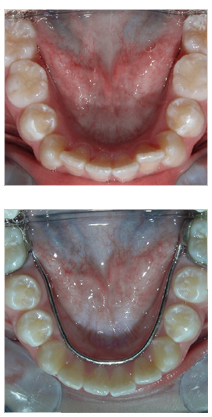
Lower space maintainer (Lower Lingual Arch)
Space maintainers are used to help maintain space when teeth have been lost prematurely or when there is crowding. The baby upper and lower 2nd molars (dentally known as the “E’s”) are actually larger than the permanent premolars that will take their place after the large baby molars fall out. The extra space around the premolars is called E space.
Typically the E space is taken up by the back permanent teeth moving forward to take up the space. When there is crowding of the front teeth, the space maintainer is used to allow the front teeth to move back into the E space instead of the back teeth moving forward

Upper space maintainer (Nance)
Upper space maintainers are also used to resolve crowding of the front teeth as well as correct the bite. The top picture shows the bite off (white lines are not aligned), and the middle picture shows the bite corrected (white lines aligned). Like the lower space maintainer, the upper space maintainer prevents the back teeth from moving forward when the baby teeth fall out, therefore creating more room to resolve the crowding and correct the bite.
 Upper expanders
Upper expanders
RPE (Rapid palatal expander)
An appliance that painlessly separates and spreads the bones of the upper jaw. The two halves of the jaw then knit back together and new bone forms to make the jaw wider.
How it works
The key is inserted into the hole and then pushed all the way to the back toward the throat. This will bring the next hole into view.
After the palate has been widened enough, it is necessary to hold its new form so new bone will grow to fill the space. Plastic is sometimes added to the jack screw so it becomes a splint.
The palatal spreading device is cemented in place and the screw must be turned by your parent.
Reasons why you may be wearing one
- There isn’t enough bone growth to accommodate the upper teeth.
- The palate (roof of the mouth) is so narrow that speech is impaired.
- The palate is so high it actually cuts down on the amount of air that can pass through the nose. Deep breathing is possible only through an open mouth. This is called mouth breathing.
How you’ll feel
- Your teeth might be uncomfortable for a day or two.
- After a week you may feel a little itching in the roof of your mouth. This is normal, as the fibers there stretch and expand.
How to clean
- Brush as usual.
- Use the water spray or oral lavage to flush out between the plastic (or metal) and the roof of your mouth.
- Use your favorite mouthwash to swish it clean.
Don’t forget!
- Review your Forbidden Foods list.
- Absolutely no gum chewing.
Quadhelix
A quadhelix is another kind of expander for the upper jaw that works slowly to expand. The quadhelix is adjusted by your orthodontist and there is nothing that you need to do except keep it very clean and keep your fingers away.
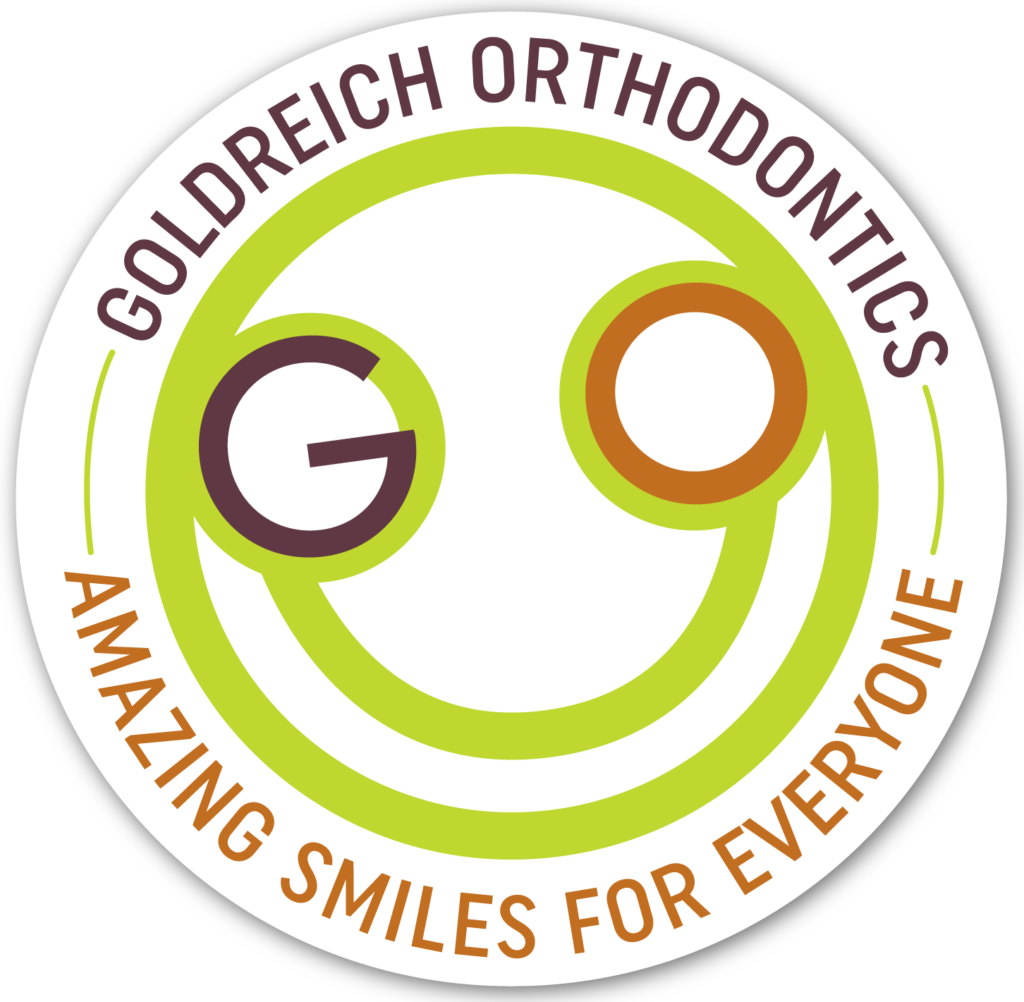
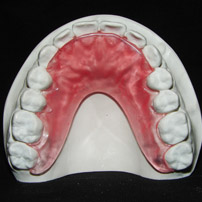 Bite plates
Bite plates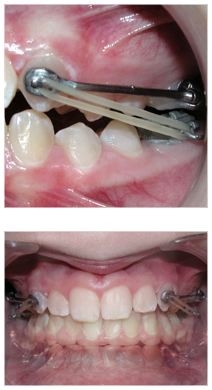
 Herbst
Herbst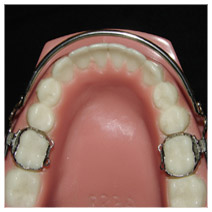 Lip bumper
Lip bumper Retainers
Retainers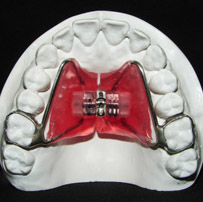 Upper expanders
Upper expanders